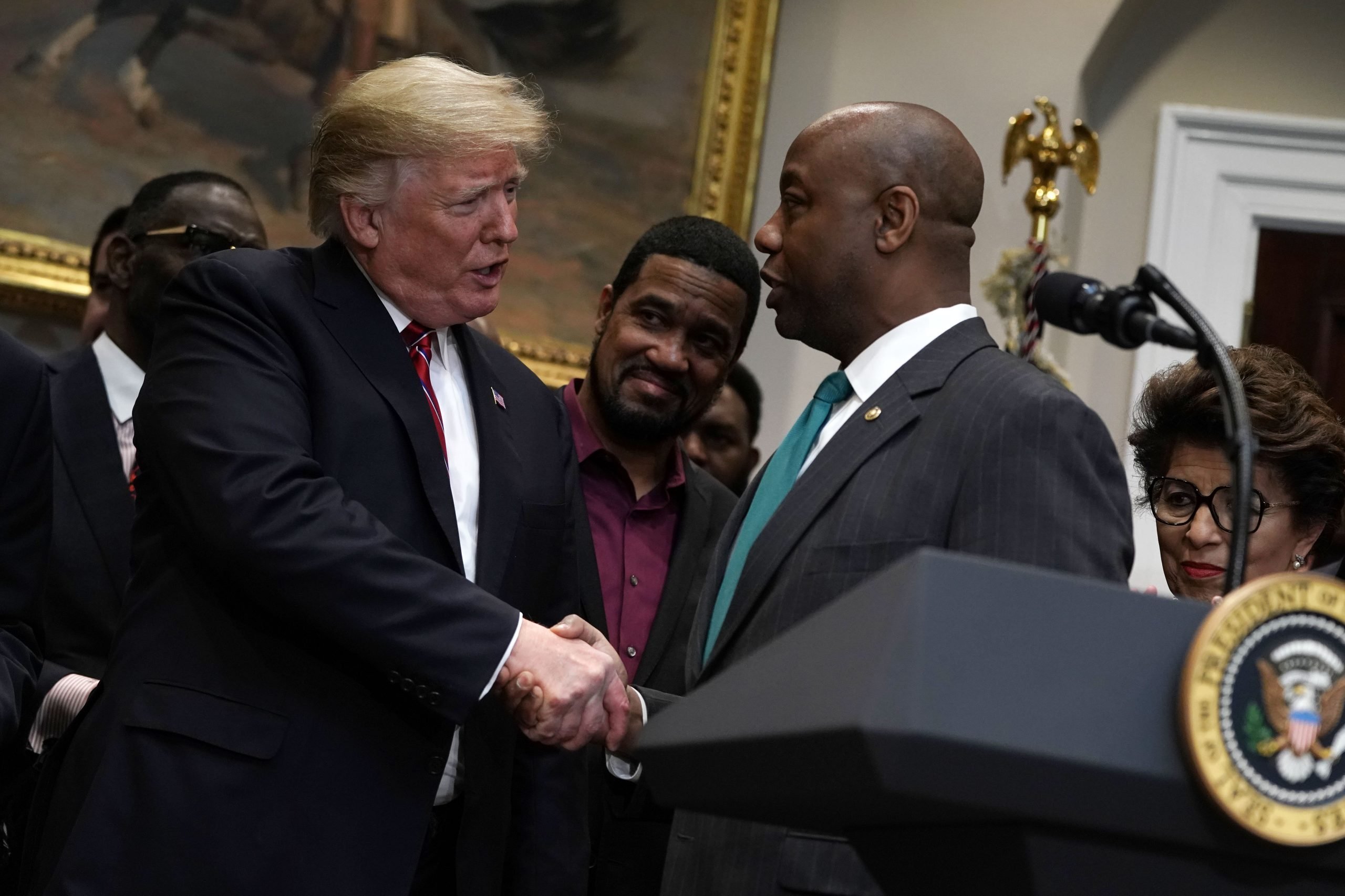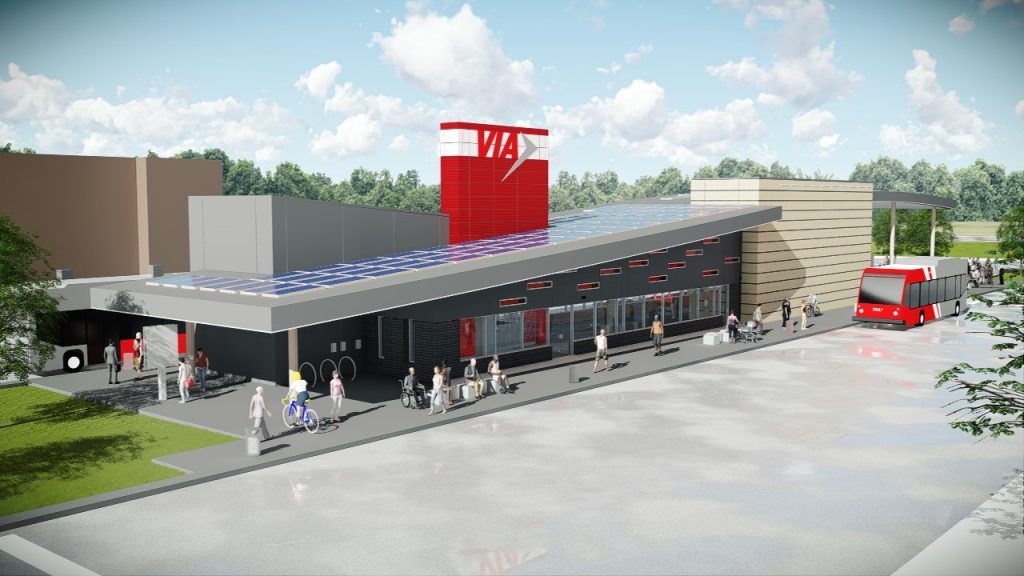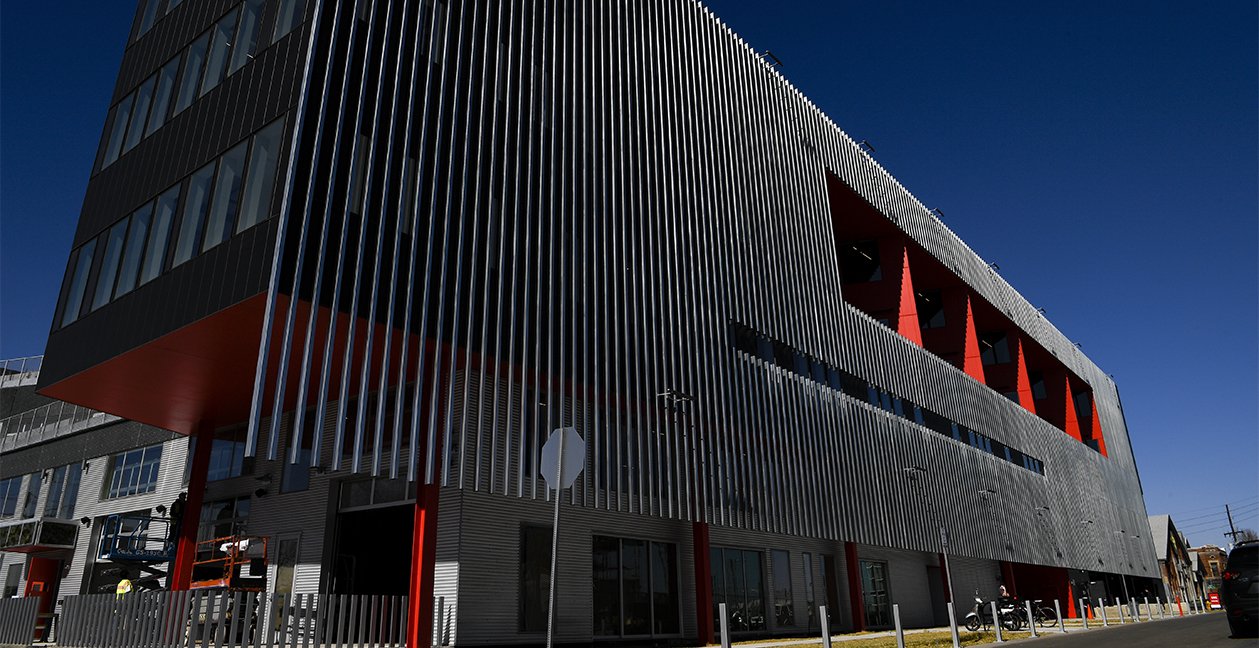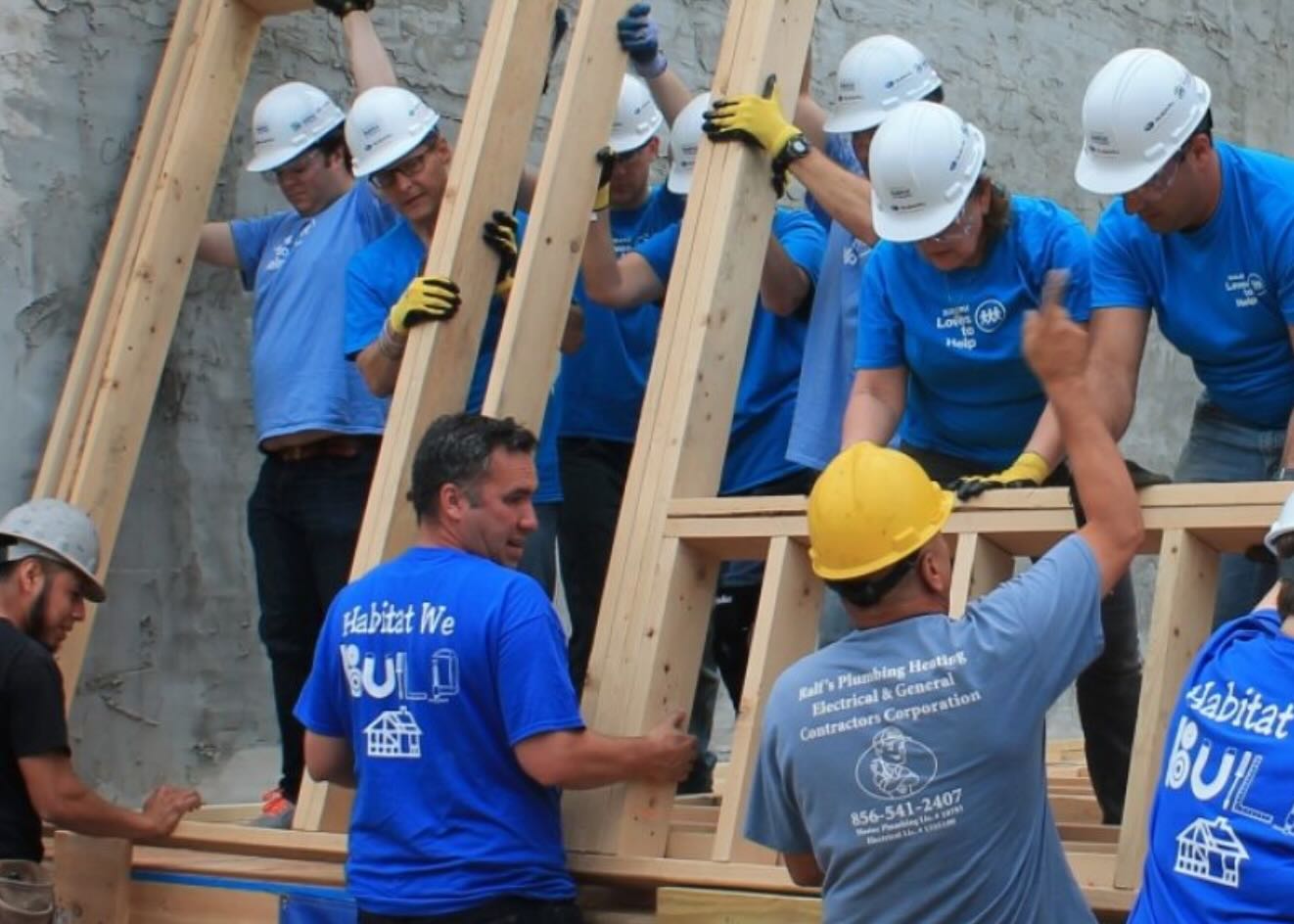Not long ago, I paid a visit to Brooks, a 1,308-acre, mixed-use community in San Antonio, Texas. Brooks used to be the Brooks Air Force Base, the home of the first airplane hangars ever built in the U.S. (One of the originals from 1918, Hangar 9, still exists, carefully preserved.) For decades, Brooks was the place where the Air Force conducted astronaut evaluation and testing.
But in the 1990s, it became clear that the Air Force was, sooner or later, going to close the base, and in 2011, it did. The closure meant the end of 2,000 jobs, mostly in the sciences—jobs that paid well. So the state government created the Brooks Development Authority, a public authority charged with transitioning Brooks to economic self-sufficiency. There was a larger mission as well: Brooks is adjacent to San Antonio’s zip code 78223, a largely Hispanic area that is one of the poorest neighborhoods in the country. Its poverty rate hovers around 20 percent, and only about 12 percent of its adults over age 25 have a college degree. So creating economic development for its disadvantaged neighbors was a central part of Brooks’ raison d’etre. “We purposefully pursue employers at both ends of the [skills] spectrum,” Leo Gomez, the president and CEO of the authority since 2013, told me. “We are trying to create jobs at various levels.”

Gomez is having some success. Brooks is now divided into three parcels—one each for mixed-use, office and light industrial development. Where once there were 163 single-family homes and barracks, there are now apartment communities, parks, restaurants and hotels. The light industrial area has several significant factories, including Nissei Plastic Industrial Co., which makes equipment that makes plastic automobile parts, and Cuisine Solutions, a Virginia-based company with worldwide facilities, including in France, that uses sous vide cooking to make food, mostly for retail. You know those Starbucks egg bites? They’re cooked at a former military base in San Antonio.

Still, there’s no easy win for Brooks. Economic development is intensely competitive, and Brooks has several hundred acres left to develop. Good news came in 2017, when Congress passed President Trump’s tax cut, the Tax Cuts and Jobs Act. That bill also created opportunity zones, economically disadvantaged areas with a special tax break: Investors who used capital gains to invest in an opportunity zone could avoid paying taxes on those gains for seven years. If you kept your money in the opportunity zone investment for a decade, you wouldn’t have to pay any taxes on those gains at all. Advocated by New Jersey Senator Cory Booker, a Democrat, and Republican Senator Tim Scott of North Carolina, the idea was to incentivize investors to put money in disadvantaged neighborhoods, thus creating economic opportunity—jobs, basically—for lower-income people. Investors would do well, and so would folks in neighborhoods that were not traditionally targets of investment dollars. It was a bipartisan program that both rich people and poor people could support.
In 2018, Texas Governor Greg Abbot designated Brooks an opportunity zone—one of 8,800 opportunity zones approved by the White House that year—and in January 2019 Brooks announced its first opportunity zone investment: the sale of 9.4 acres of land, on which would be built a “state of the art, climate-controlled, self-storage facility,” to a private investor. Gomez admits that self-storage is not exactly an employment dynamo. “Does a storage facility create jobs?” he asks. “Not really. But that investor wouldn’t have done this if it weren’t an opportunity zone.” And storage, he adds hopefully, is a meaningful amenity for the companies and people who now call Brooks their home, so if it makes Brooks a more attractive place for people to live and invest, well, then, that’s a good thing.

Gomez has another opportunity zone project in the works, 350,000 square feet of light industrial spec space. “Traditional banking has not invested in this part of town, but private investors can do it,” he says. “Opportunity zone investors are going to be a big part of our success for the next five or more years,” until development is complete.
If Leo Gomez sounded a bit defensive, it’s because opportunity zones have gotten a bad rap in the past few months. Critics have charged that the program gives wealthy investors an enormous tax break with little oversight of where their money is going. All too often, skeptics say, it’s going into projects that do little to nothing for the people opportunity zones are supposed to help. Last August, reporters Jesse Drucker and Eric Lipton wrote in the New York Times that “the Trump administration’s signature plan to lift [American cities]…has fueled a wave of developments by and built for the wealthiest Americans.” Drucker and Lipton characterized opportunity zones as “a federal tax break program that was supposed to revitalize impoverished communities but instead enriched the wealthy and politically connected.” It didn’t help that wealthy, high-profile figures like Anthony Scaramucci, Chris Christie and Jared Kushner were among the first investors. Now opportunity zones have become a political football; Bernie Sanders has promised that, if elected, he’ll end the program.
Complicating the situation further, the Wall Street Journal reported in October that investors themselves actually seemed to be having their doubts about opportunity zones. Opportunity zone funds had, to date, raised just about 15 percent of their goals. According to reporters Ruth Simon and Peter Grant, “The slow start is raising fresh questions about investor appetite for the program and what impact it will have on distressed communities.”
After talking with people involved in the opportunity zone space—and after the December release of final IRS regulations regarding the program—I think there’s a middle-ground forward. Opportunity zones are a good idea. But they need the right regulations, and probably a different administration to enforce them.
“What’s missing right now in a lot of discussions is the bigger picture,” Matt McGuire, a senior advisor at CapZone Impact Investments, told me. CapZone is launching an opportunity zone fund, and McGuire comes at the issue from a long record of engagement; he’s previously worked at the World Bank, the Commerce Department and the Treasury, and he’s an expert in affordable housing—not exactly the type of hedge fund fat cat some associate with the space. “If you go back 10 or 15 years in philanthropy, there was a whole push around comprehensive community initiatives,” he explains. “The big difference with opportunity zones is that instead of directing a grant or using a subsidy or tax credit, you’re turning to the private sector and saying, ‘We’ll make your equity investment more attractive. Go figure out, where are the best places to invest your time and capital?’”
The question, McGuire says, is not so much whether rich people are benefitting from opportunity zone investments. It’s whether they’re benefiting in a way that also helps communities and individuals—as opposed to, say, building projects that promote gentrification and displace longtime residents.
John Halpern, founder of real estate investment firm Halpern Real Estate Ventures (HREV), argues that the opportunity zone tax break is particularly important now, some 12 years after the Great Recession. Halpern’s firm, which opened in 2011, invests in what’s known as “infill development”—basically, filling in the blank spots in otherwise developed urban areas—in places like southern Manhattan, Brooklyn and Jersey City. HREV’s investment premise, Halpern says, “was all about coming out of the last recession and focusing on emerging neighborhoods…playing around the connectivity and the development of that urban core. Which really is very much of the opportunity we’re seeing in opportunity zones today. The investments we’re making in opportunity zones are very similar to the type of markets and developments we’ve been doing over the last 10 years.”
Which begs the question: If HREV has been making such investments without the opportunity zone tax breaks, why does it need them now? Halpern argues that, more than a decade after the financial crisis, investing in emerging neighborhoods is getting more difficult to justify—unless there’s a tax break. “The timing [of the 2017 tax bill] was in our view perfect, because what was happening was, we were getting to the end of the [investment] cycle. It was becoming harder to rationalize the investments that we were making at the beginning of the recovery cycle, when you were able to look at quite a long runway of growth. It’s hard to argue now that you’re going to have many more years in this growth cycle.”
“Traditionally,” Halpern says, “the capital that was available for investors like ourselves was typically five to seven-year money. So you’re investing at a point in the cycle where you believe you have five to seven years left in the cycle. You can develop a project and exit it and still be in a strong and favorable market.”

But, Halpern argues, after a decade-plus of economic growth, that five to seven-year time span isn’t looking like such a sure bet—he thinks we’ll likely see at least one recession during that time. So opportunity zones help. “Investors are now incentivized to hold the investment much longer term—11, 12, 13 years. It allows us to look through the cycles with more patient capital.” Opportunity zones, Halper concludes, “are a really important incentive to keep the momentum going.” In other words, as Leo Gomez suggested, opportunity zones are that shot in the arm that can lead investors to say yes when they might not otherwise.
HREV now has three significant opportunity zone projects for which it is providing catalyst capital. One project is on a former manufacturing site in Jersey City, where HREV plans to build some 300 units of multi-family housing. Another is in the RiNo neighborhood of Denver, an up-and-coming neighborhood which, in late 2018, was dubbed “America’s most improbably cool neighborhood” by GQ magazine. HREV is building office, retail, residential and “possibly” a hotel at the site, which happens to be near a rail yard. “We’re going to be creating exactly what the community was looking to achieve,” Halpern says, “so we think that’s a great example at the opportunity zone incentive, at work achieving neighborhood goals.”
I asked Halpern if he thought that these projects would create a risk of gentrification, and he pointed out that both those projects were on formerly industrial land. But would office, retail and multi-family housing really help the economically disadvantaged? “Helping disadvantaged people is one of the goals [of the opportunity zone program], Halpern replied, “but I think the more primary goal is to create economic development in these neighborhoods.” That, Halpern says, benefits everyone.
Truth is, the opportunity zone situation is a mixed bag. Some of the projects involved clearly hew more closely to the spirit of the concept than others; but, on the other hand, not all opportunity zones are a windfall for the moneybagged rich at the expense of the disempowered poor.
In any event, if a Democrat takes office in November, the opportunity zone landscape is almost sure to change. The program will probably get greater oversight and transparency, which may help reduce criticism from both sides of the political spectrum. It doesn’t help that the current head of the Trump administration’s opportunity zone working group is Ben Carson, the lackluster Housing and Urban Development secretary, who recently responded to criticism of opportunity zones by saying, “News flash—rich people are going to get richer, anyway.” Carson, Matt McGuire says diplomatically, is “not particularly effective.”
There are also two pieces of legislation, sponsored by Democratic congressmen Ron Wyden and James Clyburn, that would reduce the number of opportunity zones and eliminate certain types of projects from qualifying for tax benefits. Clyburn’s Opportunity Zone Reform Act would prohibit certain kinds of development, including parking lots, stadiums, residential property that doesn’t have at least 50 percent affordable housing…and self-storage units.
Correction: This article originally stated that Cuisine Solutions was a French company. The piece has been updated to say Cuisine Solutions is a Virginia-based company with worldwide facilities, including in France.







